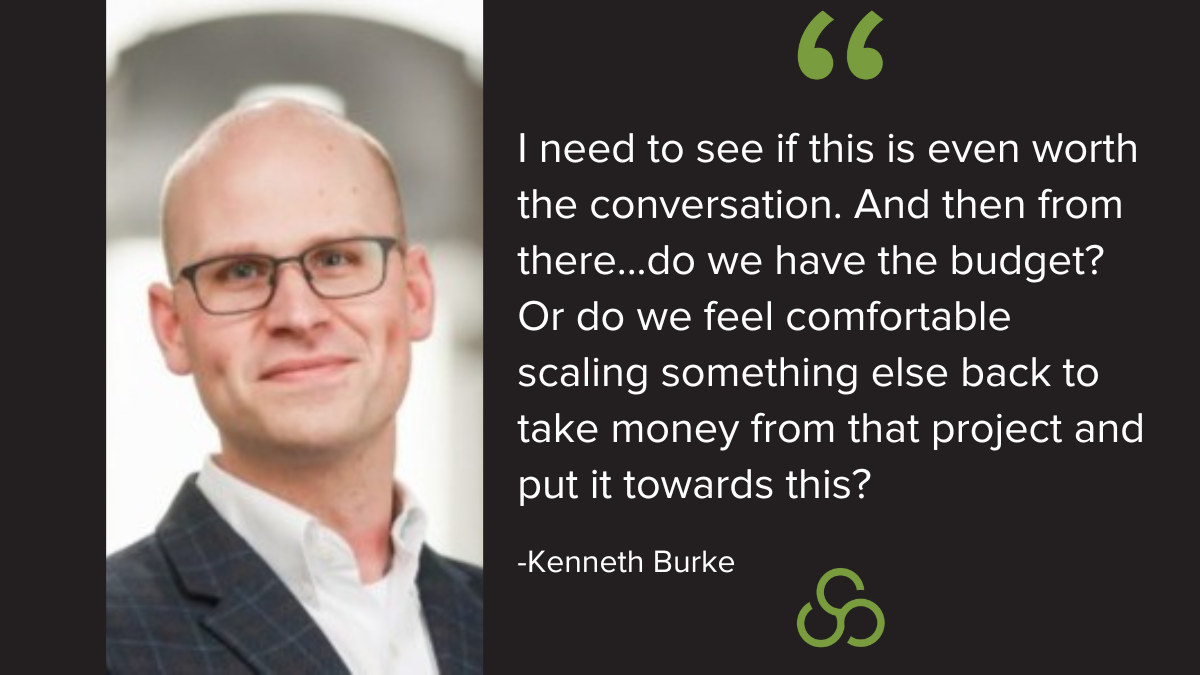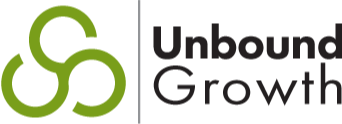
Kenneth Burke and I connected when I went on LinkedIn and saw him share some of his buying experiences. Kenneth is the VP of marketing for Text Request, a business messaging platform. And if you follow him on LinkedIn, you know he just put out some interesting statistics about the latest trends in texting.
So we've already had a couple of guests on the show who have talked about their bad buying experiences. I wanted to start on a good note and have Kenneth share his good buying experiences.
One he mentioned in our previous conversations was Calendly, which I'm also familiar with.
When you decided to explore Calendly, what was your process to narrow it down to the vendors you were trying to decide on?
Yeah. So to start with, what was the problem? So this is years and years ago, and we were trying to reduce the number of steps it took or somebody to book a demo with us. And at the time, we had a fully inbound sales funnel.
And so, you know, marketing was doing all this stuff to bring people to the website, and then people would choose to, you know, take action to talk to start a conversation. And we hated the whole request a meeting option because you'd fill out a form, and then somebody on our end would have to follow up with you via email or phone.
Wouldn't it be so much easier to choose a time while they're on the website? And then, you know, we'll find somebody who's available and show up and help you. So that was the idea. And so research pretty much Google search, a couple of software review platforms.
In our case, we looked at Capterra and G2 to get an idea of the top five out there.
And then we started going through, you know, the websites, talking to people, And for us, this is the experience I went through for this, and this is the experience I see most buyers go through.
We went to the website and asked:
- Do you do what we need?
- So, what do you do?
- Can you actually help us solve this particular problem?
- What does it look like?
- Calendly has some screenshots and illustrations of using the product on the website, which is very helpful. Then what does it cost? Is this even worth spending more time on, or will it ultimately be out of budget? Their pricing is straightforward to understand. It's on their website —public. So, there's another one we could check off the list.
- Can I trust you?
- They had logos and reviews spread across their website and, of course, on the review platforms. And so we said, okay, hey, we can trust this. And it was also a low enough price point that we could get going.
- What's the next step I need to take?
And those four or five questions there is the process I go through. Most people on our team go through this every time we make a buying decision. But in our experience, it's also what we've seen. Well, any buying decision, if it's your HVAC or, you know, your AC unit goes out, what do you do?
You jump on Google, and you search for HVAC near me. Then, go to the top three reviewed sites and check out what they do. And you send them, you know, you look at pricing if they've got anything there, and you send them a message. And then, from that point, you will go with whoever responds first.
So in this beginning part of your process, you mentioned a couple of things: how easy is it for us to tell what they do and whom they help, and how much it costs? Like, is this even in our ballpark? And, you know, what does it look like —the actual tool itself? I mean, we're so used to seeing, you know, previews and samples of things through our experiences buying on Amazon, not to be able to see it elsewhere.
It may be frustrating. And then, you know, the reviews for the trust and how to take the next step.
Out of those steps, what would you say is the most important one for you?
The most important one will be pricing. Like, just show me the pricing and exactly what I'd get with it. And it's the most important because it doesn't necessarily take up most of the journey. But it's the crux of whether or not I will buy. So I need to know. And if you're going to put hurdles in my way before I can get to that price, the chances of me working with you go down significantly. Past that, I want to see what it looks like because I want to know what kind of experience I will have before I commit. And that's a common buying situation or a, yeah, factor as well.
Now you mentioned that the price point for this was relatively low. If the price point were higher or more complex, how would that have changed what's important to you?
It depends on how complex. If theirs is a set fee per user, then you have a few tiers that dictate what features you get. And so that's very similar to text request pricing as well. And so if it was ten bucks a month per user and you can schedule up to five meetings per month of that. And then the next tier is fifteen bucks a user. You get some more features and can schedule up to fifteen monthly meetings.
That kind of tier system complicates things, making us put more effort into decision-making than necessary.
Just keeping it simple that's helpful. So, in that case, if it had been more expensive, the value they're bringing is large enough.
Hopefully, they don't hear this and take action on it. But they're bringing enough value that they could charge way more for our, you know, for our use case, and we'd happily pay it. Because every demo that comes in, we know it has a specific dollar or not associated with it that we'll make in revenue. And so we're happy to spend whatever to get that. And right now, it's, like, one thousand of our, you know, average purchase price per meeting.
And this is what I hear from many clients who are thinking about putting pricing on their websites. Their concern is that we don't want to be commoditized. We don't want to scare people away because they think it's too expensive. Also, we don't like people to, you know, just choose the cheapest option either because that might not be what they need.
When you're looking at that pricing, are you actually trying to budget it or are you just trying to get a ballpark of whether we can even afford to do this?
It goes in stages, but the latter is the first stage.
I need to see if this is even worth the conversation. And then from there, it's okay. Can we get enough out of this to make it worth it? Or do we have the budget? Or do we feel comfortable scaling something else back to take money from that project and put it towards this? So from there, there's there are many levers to pull.
And many times, to your point, I hear people saying, you know, who refuse to show pricing is things are so custom. They're so complex. We don't want to give somebody the wrong answer upfront. It is valid, but you're just elongating the process and the sales cycle. And we know that every time you add another step into the sales process, there will be some drop-off. So you have to understand how much you're losing at each stage. And then ask yourself, are you really comfortable with that?
I know for myself, as a buyer, when I go through a long process, and I'm figuring out if this is the tool, software, or service that will suit me. And you go through the discovery call and the demo call. You may be excited about the tool, and then you get to the pricing conversation. And in your mind, you're going; please don't say this number.
So I imagine that reduces friction earlier than later for you?
Yes, absolutely. And to me, it's also a good lesson in understanding your customer in and out. And so if you know who your target customer is and you are speaking to them and your pricing and packaging and everything else, they're comfortable with this number.
They're used to this kind of number in their budget. I mean, even if it's, I don't know, if it's a six-figure deal, they're used to six-figure deals. That's where they spend their time. Putting a hundred thousand dollars or two hundred fifty thousand dollars for enterprise software on your website should not be something to be afraid of because people are always looking at it.
Now, if it tells people who would be afraid of that number. Then we aren't for you. And that's going to save you time as well. It works the same in reverse. So, for instance, going back to Calendly with this small fee per user --ten to twenty bucks, depending on your plan, ten to twenty dollars a month.
And so if you're a big enterprise looking for something more robust. That pricing also tells you that this may not be a good fit for me.
📶Connect with Kenneth Burke on LinkedIn
➡️And If you love this video, please share it and add your comments. I would love to hear your feedback on this particular topic.
WHAT DOES GOOD LOOK LIKE AS AN # ENTREPRENEUR WHO SELLS?
Carole Mahoney and Databox have the answer. Small business owners who use Hubspot can anonymously #benchmark their #sales data in seconds.







